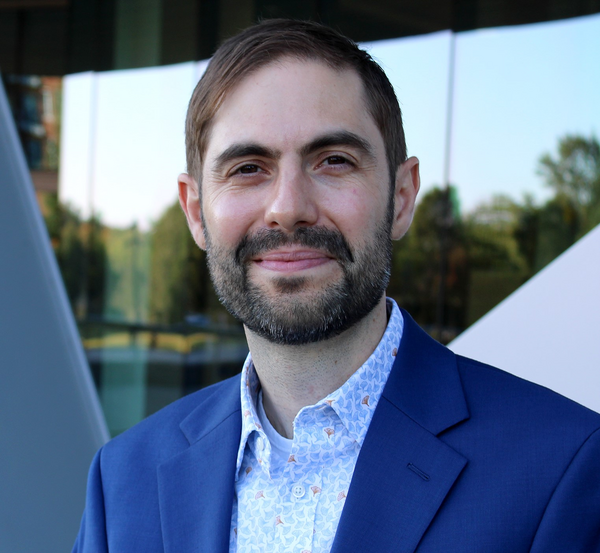
AE 590 Seminar Speaker Jason Patrick: Self-healing and Self-sensing in Structural Composites
- Event Type
- Seminar/Symposium
- Sponsor
- Aerospace Engineering
- Location
- CIF 2035
- Date
- Apr 7, 2025 4:00 - 5:00 pm
- Views
- 280
- Originating Calendar
- Aerospace Engineering Seminars
Abstract:
Fiber-reinforced polymer (FRP) composites are attractive structural materials due to their high specific strength/stiffness and excellent corrosion resistance. However, constituent heterogeneity and lack of through-thickness reinforcement in layered FRP composites creates inherent susceptibility to fiber-matrix debonding (i.e., interlaminar delamination). This multi-scale damage mode has proven difficult to detect/repair via conventional methods and remains a significant factor limiting the reliability of laminated composites in lightweight structures.In this talk, I will describe the development of a self-healing composite platform1-3 based on thermally-induced dynamic bond re-association of 3D-printed polymer interlayers. In contrast to prior thermal remending approaches, self-repair occurs in situ via resistive heating and below the glass-transition temperature of the thermoset epoxy matrix, thus preserving elastic modulus during repair. Rapid (minute-scale) and sustained (1000+) self-healing cycles have been achieved with fracture recovery reaching 100% of the toughened composite. In addition to capacity for self-repair, a self-sensing strategy is integrated to synchronously and repeatedly monitor both damage and healing, which provides feedback control for autonomous function. These latest FRP composite innovations exhibit unprecedented capacity for in-service diagnostics and self-repair, but also multi-functionality (e.g., thermal deicing), which engenders application versatility alongside structural resilience.
References
- A.D. Snyder, Z.J. Phillips, J.S. Turicek, C.E. Diesendruck, K.B. Nakshatrala, & J.F. Patrick, Prolonged in situ Self-healing in Structural Composites via Thermo-reversible Entanglement, Nature Communications, 13:6511 (2022).
- J.S. Turicek, A.D. Snyder, K.B. Nakshatrala, & J.F. Patrick, Topological Effects of 3D-printed Copolymer Interlayers on Toughening and in situ Self-healing in Laminated Fiber-composites, Composites Science and Technology, 110073 (2023).
- A.D. Snyder, J.S. Turicek, C.E. Diesendruck, R.J. Varley, & J.F. Patrick, Unraveling Chemical and Rheological Mechanisms of Self-healing with EMAA Thermoplastics in Fiber-reinforced Epoxy Composites, Composites Part A: Applied Science and Manufacturing, 185:108271 (2024).
Bio:
Jason Patrick is an Associate Professor in the Department of Civil, Construction, and Environmental Engineering with a courtesy appointment in Mechanical and Aerospace Engineering at NC State University. He obtained his Ph.D. in Structural Engineering from the University of Illinois Urbana-Champaign and was a Postdoctoral Fellow at the Beckman Institute before becoming faculty. Prof. Patrick has 20+ years of experience in R&D of advanced fiber-reinforced polymer composites with several patents issued and ongoing federally funded research projects by the DoD and NSF. He is a recipient of the US Air Force Young Investigator Award. Dr. Patrick’s group is directed toward the understanding and development of bioinspired material systems that exhibit multi-functionality for enhanced performance, reliability and longevity.